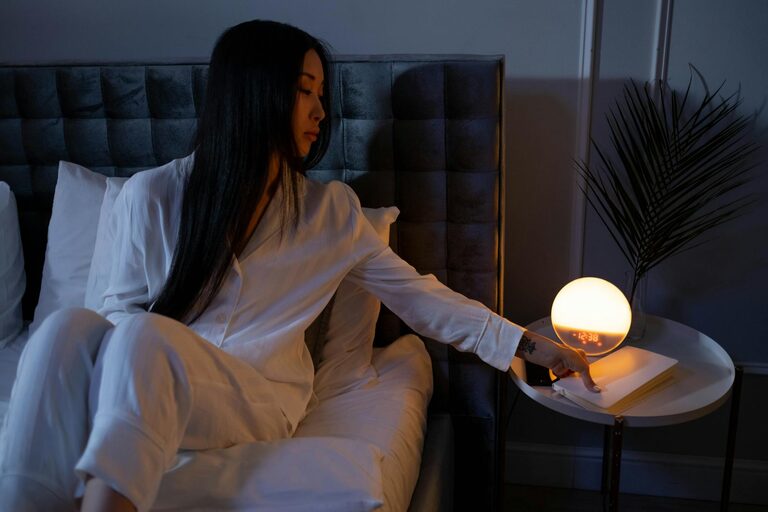
How to Create a Relaxing Bedtime Routine for Better Sleep
A relaxing bedtime routine can make a big difference in the quality of your sleep and overall well-being. When your body and mind know it’s time to wind down, it becomes easier to fall asleep quickly and enjoy deep, restorative rest. If you’ve ever struggled with sleepless nights or feeling restless before bed, creating a calming nighttime ritual may be just what you need.
In this post, we’ll explore how to design a bedtime routine that suits your lifestyle and helps you relax each evening. From setting a consistent schedule to choosing soothing activities, these tips provide a gentle guide for better sleep.
Why a Bedtime Routine Matters
Our bodies operate on a natural rhythm called the circadian clock, which responds to light and dark cues. Establishing a bedtime routine helps signal to your brain that the day is ending, supporting this internal clock. When your routine is consistent, it can:
– Reduce stress and anxiety at night
– Improve your sleep quality and duration
– Make it easier to wake up feeling refreshed
– Promote relaxation that benefits both mind and body
Even just 30 minutes of calming activities before bed can make a noticeable difference.
Step 1: Choose a Consistent Sleep Schedule
Going to bed and waking up at the same time every day helps regulate your body clock. Try to:
– Pick a bedtime that allows for 7–9 hours of sleep
– Stick to this schedule even on weekends or days off
– Avoid large variations in your sleep and wake times
Consistency trains your body to feel sleepy when it’s time and alert when it’s morning.
Step 2: Create a Calming Environment
Your bedroom should feel like a peaceful retreat from the day. Consider these factors:
– Lighting: Dim the lights 30–60 minutes before bed. Use soft lamps or candles instead of bright overhead lights.
– Temperature: Keep the room cool—around 65°F (18°C) is ideal for most people.
– Noise: Use white noise machines, fans, or calming music to block disruptive sounds.
– Comfort: Invest in a comfortable mattress and pillows suited to your needs.
A serene atmosphere makes it easier to relax and helps signal your brain that it’s time to sleep.
Step 3: Incorporate Relaxing Activities
Choose activities that calm your mind and body. Some popular options include:
– Reading: Pick a book that’s enjoyable but not too exciting or stressful.
– Meditation: Practice deep breathing or mindfulness exercises for 5–10 minutes.
– Gentle stretching: Light yoga or stretching can release tension.
– Warm bath or shower: Helps lower your body temperature, which can promote sleepiness.
– Journaling: Write down any worries or a gratitude list to clear your mind.
– Listening to soothing music or nature sounds: Helps distract from busy thoughts.
Avoid stimulating activities like working, watching intense TV shows, or using electronic devices with bright screens.
Step 4: Limit Screen Time and Stimulants
Blue light from phones, tablets, and computers can interfere with melatonin production—a hormone that regulates sleep. To reduce this effect:
– Turn off screens at least 30 minutes before bed
– Use “night mode” settings that reduce blue light if you must use devices
– Avoid caffeine and nicotine in the evening
– Limit heavy meals and alcohol close to bedtime
Giving your brain a break from screens helps it prepare naturally for sleep.
Step 5: Be Patient and Adjust As Needed
Building a new habit takes time. You might find some parts of your routine work better than others. Try different activities and timings until you find what feels most relaxing. Keep in mind:
– Avoid stressing about falling asleep; this can make it harder.
– If you don’t fall asleep within 20 minutes, get up and do a quiet activity until you feel sleepy.
– Keep your routine flexible to accommodate life changes but aim to maintain consistency overall.
With time and practice, your bedtime routine will become a comforting ritual that supports peaceful sleep.
Sample Relaxing Bedtime Routine
Here’s an example routine you can adapt:
- **9:00 pm** — Dim lights and turn off screens
- **9:05 pm** — Take a warm shower or bath
- **9:20 pm** — Do gentle stretches or yoga
- **9:30 pm** — Write in a journal or read a calming book
- **9:50 pm** — Practice 5 minutes of deep breathing or meditation
- **10:00 pm** — Turn off lights, get into bed, and relax
By following these steps consistently, your body will learn to associate this routine with rest, helping you fall asleep more easily.
Final Thoughts
A relaxing bedtime routine is a simple but powerful way to improve your sleep and overall health. By setting a consistent schedule, creating a calm environment, and choosing restful activities, you prepare your mind and body for a good night’s sleep. Experiment with different ideas until you find what works best for you.
Sweet dreams!
